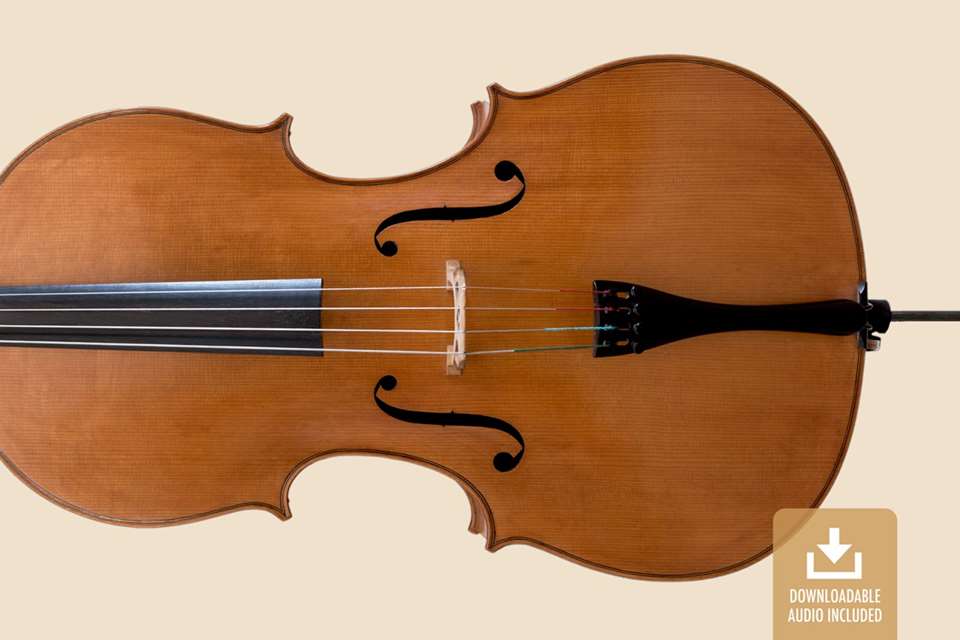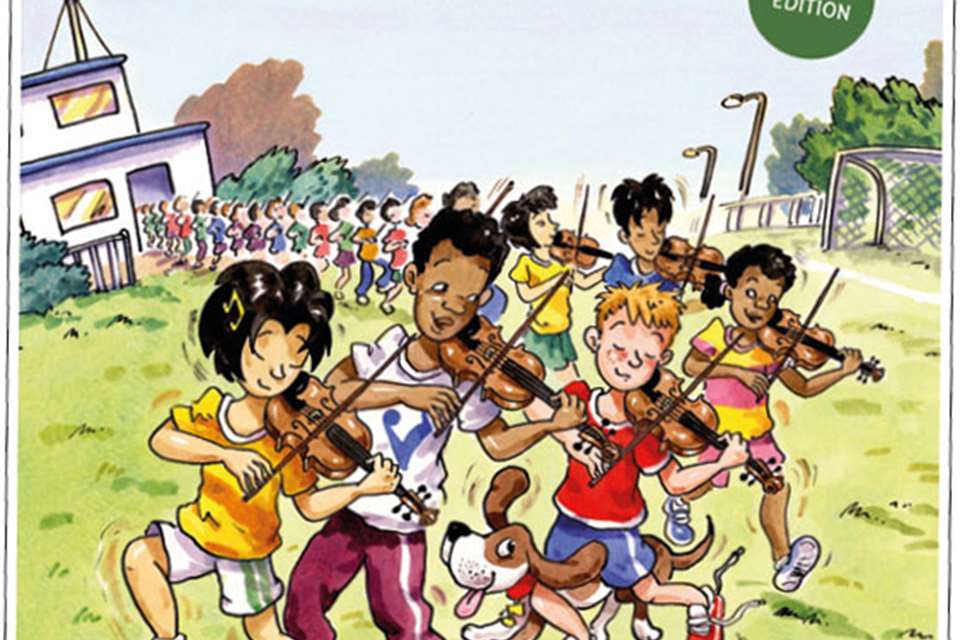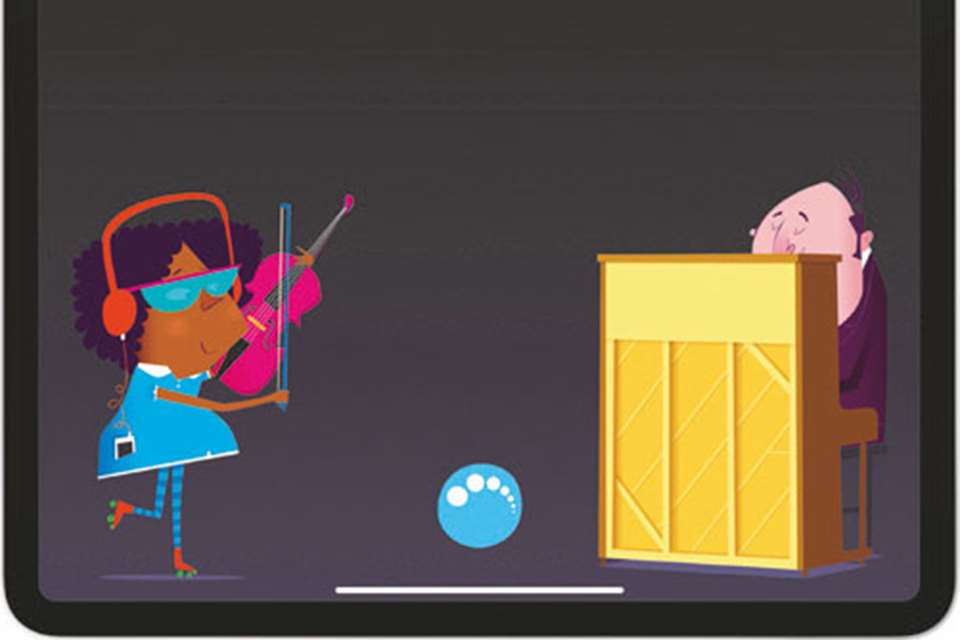Too refined to riff? Removing genre constraints for young string players
Georgina Leach
Saturday, October 1, 2022
When bowed strings are among the most expressive and versatile of instruments, why do classically trained players sometimes feel constrained by genre? Georgina Leach, violinist and author of Dynamite Strings, investigates.

DRN Studio/AdobeStock
When I think of genre-busting string playing, I'm not talking about rattling off a few Irish jigs or dipping into the gypsy music of Hungary. Nor do I refer to instrumental versions of pop songs or string sections simpering in a nice, neat row behind the band. Mastery in any musical domain is undoubtedly a lifelong pursuit, but these are genres or ways of playing that either have a robust existing string tradition or can be accessed fairly satisfactorily via many readily available resources.
I'm interested in those genres that don't usually feature strings as a lead instrument. Why shouldn't I be in the middle of a festival stage, foot on monitor doing battle with the lead guitarist? Why can't I take a big, indulgent solo like a saxman in an ‘80s ballad, or get mesmerised for 20 minutes in an Afrobeat jam?
Well, I can, and I have – and let me tell you, it's a lot of fun! I want my students to feel free to do the same; I want them to feel as comfortable joining a rock band as they would do an orchestra.
Reframing the approach
With an instrument as technically demanding as the violin, a classical training gives us incredible facility and precision. However, skills like improvisation and playing with a swing feel are not usually on the menu. The beautiful, refined tone that we work so hard to cultivate is the musical equivalent of RP (received pronunciation) and exploiting the raunchy in-between of a bent note is alien when our intonation is laser focused.
Classical music demands that we not only play the right notes, bowing, articulation and phrasing, but respect stylistic conventions and good taste. With such a narrow margin for error, we can become hyper self-critical and highly dependent on correction from experts. When I first started going to jam sessions, I was haunted by the question: ‘was what I just played any good?’ (In a bid to stop my overthinking, one songwriter friend wouldn't let me onstage until I was one pint down!)
To find true freedom, classical musicians need to develop a profound trust in our own musical judgement, tune back into our intuition, and reframe our attitude to mistakes. So, how do we make this shift? And how do we best equip our students to pursue their own lines of enquiry – especially those that lie outside of our own comfort zones?

© SOLID PHOTOS
Innovate don't imitate
Gypsy jazz is a popular genre for classical players to explore; however, there is a danger that we can ‘classicise’ our approach. I have watched masterclasses where terrified students are demolished for doing the ‘wrong’ bowing or ‘incorrect’ shifts. There are purists in all musical realms, and we need them for traditions to survive, but genres such as jazz and blues have invention, improvisation and risk-taking at their very heart. Studying transcriptions and licks undoubtedly helps us to internalise musical ‘vocabulary’, but it's imperative that we find our own voice. If we only imitate, we will never innovate.
For classical musicians wishing to ‘unfix’, the single best thing we can do is not to immediately seek the judgment of another expert by yet more formal study, but get out there, get our hands dirty and play. We absorb attitudes and etiquettes by osmosis. Start small by finding a couple of friendly musicians in your target genre to play with informally and build confidence. Other instrumental teachers are often a good bet. Progress to a jam session or approach a local band. Being the novice can be daunting, but if you turn up with respect, curiosity, and humility, you will be welcomed. People love to be asked for their advice and are usually intrigued to compare experiences.
We can often learn more from people who play a different instrument to us. The same can be said for sitting in with players of varying levels of experience or technical proficiency. What is it that makes one solo soar and another fall flat? A barrage of fast notes is impressive, but sometimes three chords and the truth have greater emotional impact. View everyone and everything as your teachers – it is these constant little evaluations and interactions that develop our taste. Was my playing any good? Well, did it feel good? And are people dancing?
Mistakes on a spectrum
Mistakes in classical music tend to be binary, whereas in improvised music, mistakes exist over a spectrum. A solo can certainly be more or less successful in achieving a desired outcome – for instance, whipping the crowd into a frenzy, but with so many variables at play, ‘correct’ becomes a redundant concept. Sometimes the most incendiary moments can arise from playing an unintended note and being forced in an unexpected direction. Mistakes are inevitable when you're improvising, so it becomes about how you style it out and how quickly you move on. So what if you crash and burn? No one's going to die. Pull a bold move and rise like a phoenix from the ashes!
When it comes to our pupils, we should encourage them to have strong opinions and make choices from the word go. It could simply be voicing that they dislike a piece or improvising open string rhythms. More advanced students might compose a cadenza or record some fiddle over a song. Research different styles together and play or listen to tracks. Mess around with amplification and guitar pedals (a decent pickup like Headway's ‘The Band’ is better than a cheap electric fiddle in my opinion). Make lessons more collaborative by asking students to suggest repertoire or introduce you to their favourite tracks. Dedicating lesson time to these types of activities sends pupils a clear signal that they are valuable. If you cannot provide the musical experience a student seeks, help them find it elsewhere.
Model resilience by making mistakes and trying again. Experiment with making horrible sounds on your instrument and have a competition with students – this can help lessen anxiety around making mistakes. Being open about your own learning process is a strength. When I studied A Level Music, our group chose a module on Popular Music. Our teacher was upfront about her lack of knowledge in this area, so we researched it together and it was both empowering and inspiring to see how she applied her expertise to something unfamiliar.
By taking an open-minded approach to genre and adopting attitudes and modes of learning outside the master-apprentice model, we will not only have one hell of a good time but make string playing far more inclusive. It is my great hope that we will see a new generation of unruly maverick string players bursting onto the scene and causing mischief!







